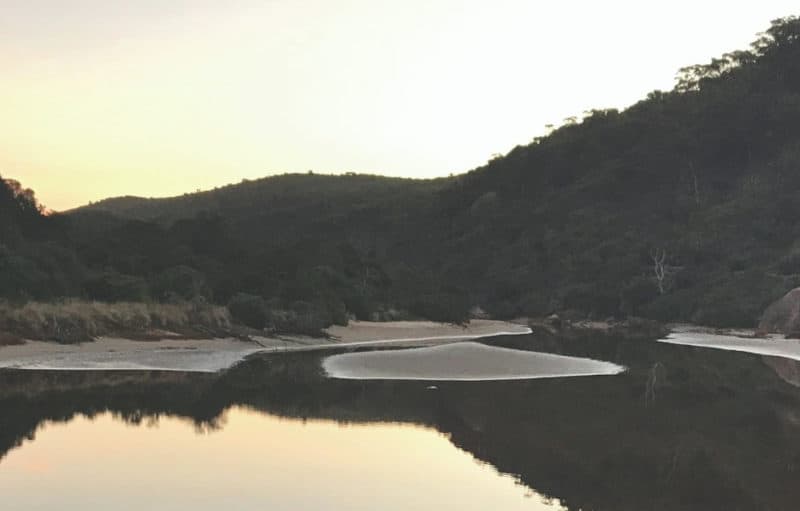PARK WATCH June 2021 |
Nature Conservation Campaigner Jordan Crook takes us to visit our most at risk ecosystems.
Amongst the existing suburbs and factories of the western suburbs of Melbourne, the wind sweeps through fields of Kangaroo Grass, and Striped Legless Lizards scurry on through the volcanic rocks and cracked soil.
In these special places between the concrete and bitumen, the land is still alive and home to species that have evolved and lived in these grasslands for many millennia.
These small remnants of the volcanic plains grasslands of Victoria, despite the odds, exist and provide a home for a raft of insect, animal and plant life among the ever industrialised and suburbanised landscape of the city’s west. It is astounding that these areas have quite literally narrowly avoided complete destruction since the colonisation of Victoria.
These last urban grasslands hold some of the most intact and high-quality examples of Natural Temperate Grasslands of Victoria’s volcanic plains that once stretched from the western suburbs to the South Australian border, much like the savannah of Africa or the prairie of North America. These urban sites still provide suitable habitat for threatened grassland species such as the Striped Legless Lizard and Southern Tussock Skink as they have escaped the plough and de-rocking exercises of past agricultural land use.
As you may have read in The Age in mid-March this year in the article “It’s deplorable’: Call to halt loss of Melbourne’s native grasslands’, community groups, grassland scientists and VNPA has been inspecting sites around Burnside (near Deer Park), Altona and Sunshine.
Through the work of community groups and scientists, we are finding some beautiful and significant sites scattered around the suburbs, with some blocks over 40 hectares and containing threatened species such as the Spiny Rice Flower (FFG Act Vulnerable/ EPBC Act Critically Endangered) and Striped Legless Lizard (FFG Vulnerable/EPBC Vulnerable). Most are outside the area covered by the controversial Melbourne Strategic Assessment, which was heavily criticised by the Victorian Auditor-General last year (See www.audit.vic.gov.au/report/protecting-critically-endangered-grasslands)
The sites are scattered across private land between factories in industrial zones, along bike tracks, on development sites that were once paddocks, like the Burnside development near Deer Park.
The Burnside site had its fate sealed a few years ago by the federal and state governments, and will now become part of the surrounding housing estate, despite repeated concerns by local conservationists and grassland ecologists that the site could contain a large and healthy population of the Striped Legless Lizard.
The first time I inspected the Burnside site in 2020, fields of Kangaroo Grass swayed in the breeze as we climbed over large volcanic rocks embedded in the soil, indicating the site had not been disturbed and would most likely contain significant populations of threatened species. Surrounded on two sides by the Kororoit Creek, the lost potential of the Burnside site for a fantastic reserve and open green space for the surrounding housing estate highlights the need for better planning and proactive conservation of these significant sites.
Continued poor planning is leading to the loss of these high-quality native grasslands in urban areas that are still valuable habitat for threatened species. It is pivotal that we don’t lose what is left. The urban planning boxes are being ticked with no real outcomes for threatened species.
Plan Melbourne, the main strategic guidance document for the metropolitan area which was released in 2014 (with various updates), acknowledges the importance of natural areas in urban areas:
“There is a critical need to maintain and improve the overall extent and condition of natural habitats, including waterways. Natural habitats need to better protect native flora and fauna, enhance the community’s knowledge and acceptance of wildlife in areas they live, enhance access to nature and recreational opportunities across urban areas and make Melbourne an attractive place to live and visit.”
The plan includes a number of clear policies, including:
“Policy 6.5.1: Create a network of green spaces that support biodiversity conservation and opportunities to connect with nature.”
This seems good, but when the rubber hits the road for the Melbourne 2030 implementation plan, the key drivers only focus on a range of measures around the protection of waterways, climate change mitigation, coastal hazard reduction plans – but nothing which explicitly addresses nature within the urban context for unique natural areas, such as native grasslands, or provides a vehicle for policy 6.51 to be implemented. This, combined with the continued failure of the Melbourne Strategic Assessment, means more needs to be done if we have any hope of stabilising the decline of these once widespread ecosystems.
VNPA and community groups are calling for a stocktake and thorough independent survey of remaining high-value grasslands and threatened species habitat in the outer Melbourne region, to protect threatened species where they are currently living as the suitable habitat already exists.
We are calling on the Department of Environment, Land, Water and Planning (DELWP) to be proactive in seeking protection of these high-quality grassland sites prior to planning for development and bulldozers start rolling in.
With less than five per cent of native grasslands remaining, the need for proactive conservation of grasslands is vital to protect this amazing ecosystem and the wonderful species that call them home – not to mention also protecting the open space, stored carbon, and stormwater benefits native grasslands perform in the urban environment.
I acknowledge the importance of grasslands to First Nations communities and their ongoing connection to these areas of natural and cultural significance.
Did you like reading this article? Want to be kept up to date about this and other nature issues in Victoria? Subscribe to our email updates.
You can also receive our print magazine Park Watch four times a year by becoming a member. Find out more here.
